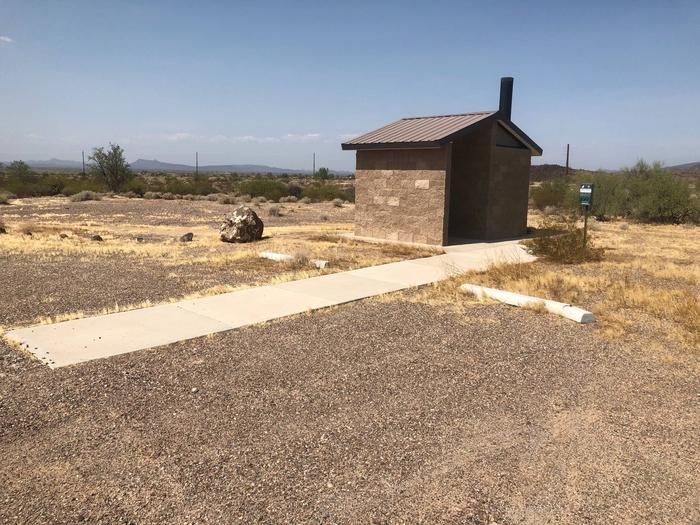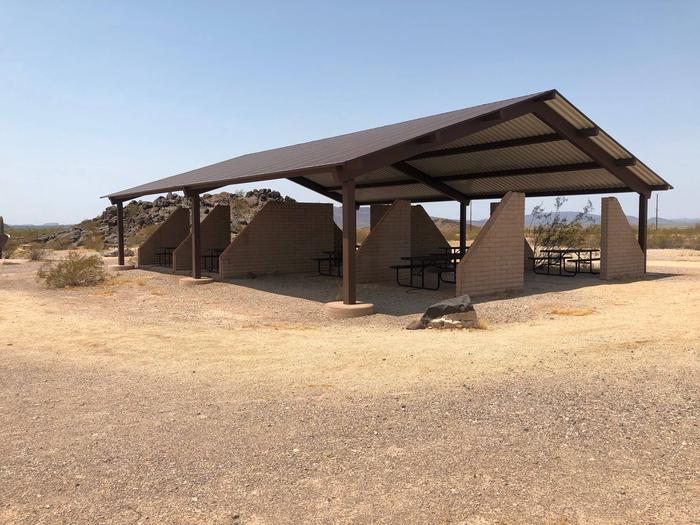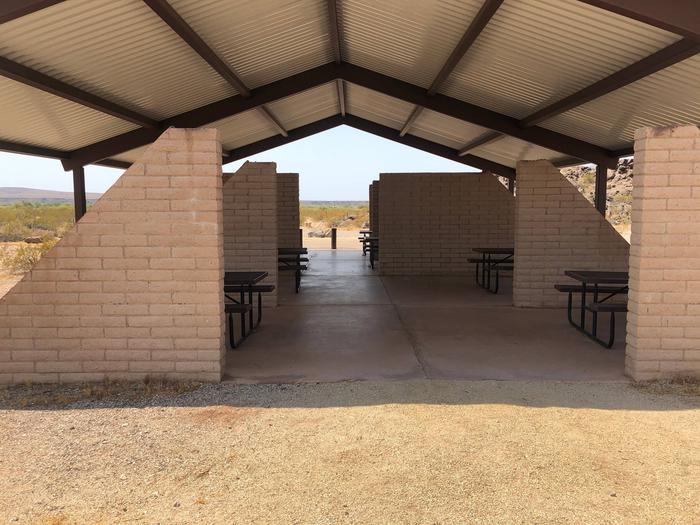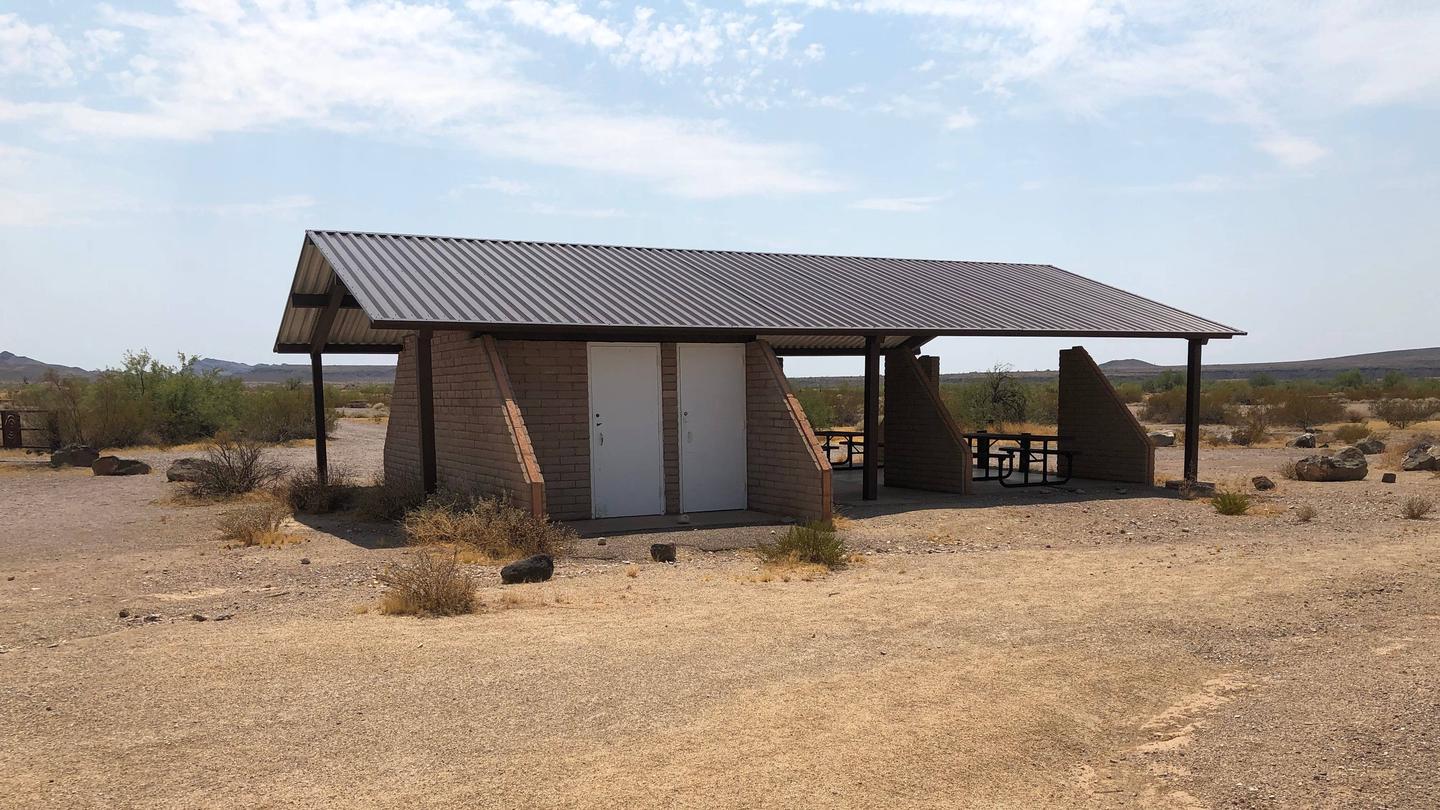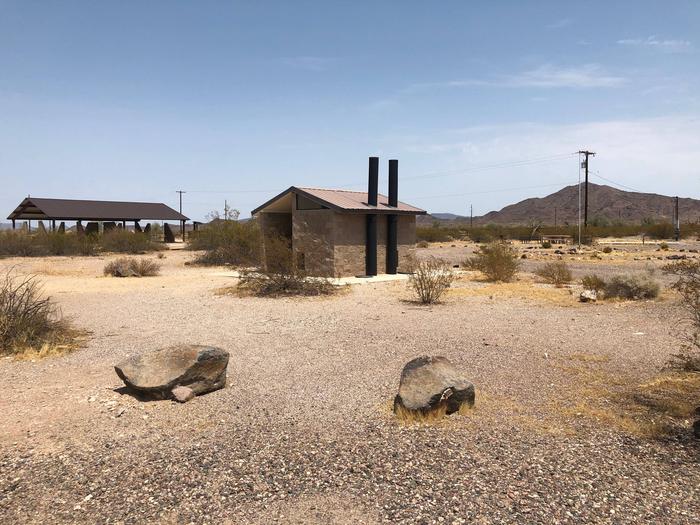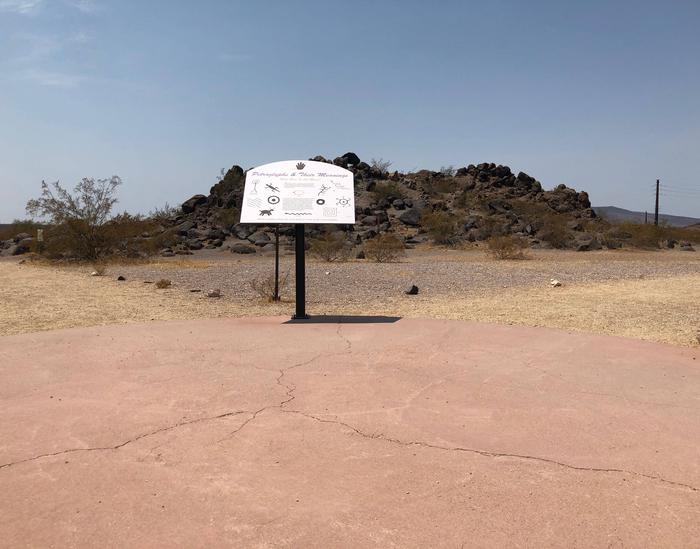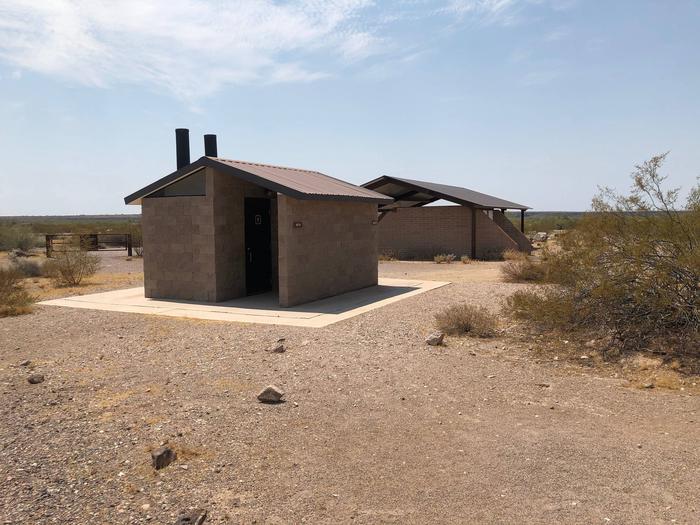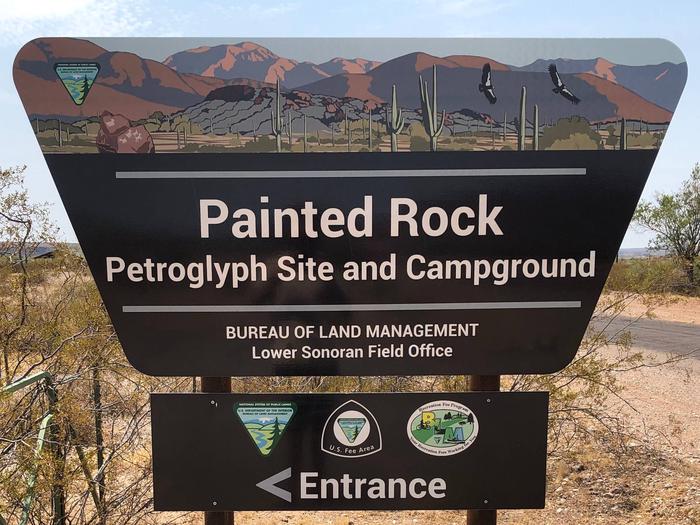Painted Rock Petroglyph Campground
Overview
Painted Rock Petroglyph Site, approximately 90 miles southwest of Phoenix, Arizona, provides visitors the opportunity to view an archaeological site containing hundreds of figures and designs carved into rocks, known as petroglyphs. These were produced centuries ago by indigenous peoples. This site is considered important and even sacred to many of the Native American tribes in southern Arizona. Please keep this in mind when you visit and be respectful. There are also inscriptions made by people who passed through during historic times.
Many important trails are near the site, some of which have been traveled for thousands of years. The 1775 expedition of Juan Bautista de Anza passed nearby on his way to deliver soldiers, padres, settlers, and their livestock to a new home in northern California to secure the area for Spain. In 1846, the Mormon Battalion passed through, following Philip St. George Cooke along some segments of this trail to help secure California from Mexico. This venture included road building tasks along the trail, assuring that future trips could accommodate wagons. A need to improve communication and travel from east to west prompted Congress to fund a stage line. The result was the Butterfield Overland Stage Route, which began service in 1858 and traveled by this site. This mail and freight service guaranteed that the mail, freight, or passengers would be able to travel from Saint Louis to San Francisco in 25 days. Use was halted when the railroad was constructed in 1879.
Formerly a unit of the Arizona State Park system, jurisdiction of Painted Rock Petroglyph Site returned to the Bureau of Land Management in 1989.
Recreation
The day-use site is right next door to the campground and offers two shaded picnic areas and a small interpretive trail around the petroglyph site with informational displays. The petroglyphs face the east-southeast primarily and would have been noticed by any travelers approaching from that direction. Hiking, birdwatching, and star gazing opportunities all present themselves at this site.
Facilities
The day-use site is right next door to the campground and offers two shaded picnic areas and a small interpretive trail around the petroglyph site with informational displays. The petroglyphs face the east-southeast primarily and would have been noticed by any travelers approaching from that direction. Hiking, birdwatching, and star gazing opportunities all present themselves at this site.
Natural Features
Set between impressive geologic features such as Oatman Mountain, a few miles to the northwest and the Painted Rock Mountains, situated on the eastern horizon, this campground offers scenic panoramic views and plenty of opportunities for solitude and vast night skies. The surrounding area features a diverse Sonoran Desert plant community including the iconic saguaro cactus, various cholla species, barrel cactus, creosote bush, and both ironwood and palo verde trees. The area is home to a large population of desert mule deer and many other desert species such as kit fox, Gambel’s quail, chuckwalla, and desert iguana.
Nearby Attractions
Woolsey Peak Wilderness
Woolsey Peak Wilderness offers rugged topography, colorful scenic vistas, rich variety of wildlife and vegetation, and outstanding opportunities for solitude and unconfined recreation. Woolsey Peak stands 3,270 feet above sea level and about 2,500 feet above the Gila River (to the south). It is a landmark visible from much of southwestern Arizona. The Painted Rock Dam flood- control dam is situated on the Gila River not far from the southwestern corner of the area. Encompassing a major portion of the Gila Bend Mountains, it is barely separated from the smaller Signal Mountain Wilderness to the north. You will find sloping lava flows, basalt mesas, ragged peaks, and broken ridges dotted with saguaro, cholla, palo verde , creosote, and bursage. Desert mesquite, paloverde, and ironwood grow in the washes throughout this rugged and expansive desert wilderness. The region is especially inviting for its desert backpacking. Desert bighorn sheep, mule deer, bobcats, mountain lions, hawks, and owls might make an appearance.
Signal Mountain Wilderness
A narrow, four-wheel-drive road is all that separates Signal Mountain Wilderness from Woolsey Peak Wilderness to the south. Signal Mountain itself, rising just north of the center of the area, reaches a summit of 2,182 feet (1,200 feet above the surrounding desert floor). Here you will find sharp volcanic peaks, steep-walled canyons, ragged ridgelines, arroyos (slim, usually dry riverways), and plains spreading out from the washes. Paloverde, saguaro, and creosote are scattered throughout the bajadas and upland regions. Washes are lined with mesquite, ironwood, acacia, and palo verde. Wildlife watchers may see desert bighorn sheep, desert tortoises, and several species of raptors. Wildlife game species are common, and quail and mule deer hunters are frequent visitors.
contact_info
For facility specific information, please call (602) 867-5400.Photos
Accessibility Description (ABA/ADA)
View images of accessibility features in new window.
Day-use area:
The parking lot for the day-use area next to the Campground is packed gravel. There is a signed accessible parking space near the path leading into the day-use area. The surface of the parking lot should be suitable for visitors using wheelchairs or other mobility devices.
The concrete sidewalk leading into the day-use area has a lip separating it from the parking lot. Watch for separations between concrete blocks; other transitions from concrete to dirt vary from smooth to abrupt. Concrete sidewalks connect the parking lot to an information kiosk, a picnic ramada, and an accessible double-vault toilet, before reaching the petroglyph site.
The day-use picnic ramada covers 8 picnic tables. Tables are on concrete pads, and 4 of them have an extended end to accommodate wheelchair users. There are 2 pedestal grills on gravel next to the ramada.
Beyond the ramada, a crushed-gravel path leads to the petroglyph site. Information about the site is provided by interpretive panels in 2 round concrete areas as well as other, unpaved areas. There are 2 benches without arms, 1 on the east side of the petroglyph site and 1 on the west side.
Cell phone coverage is generally good, depending on your carrier.
Petroglyph site:
West of the Day-Use Area is the petroglyph site, which is 2 small hills with rock art on many of the basalt boulders. The path around and through the rock art is gravel, which may be challenging for visitors using mobility devices.
Campground:
An information kiosk sits on concrete near the entrance to this first-come, first-served site where camping fees must be paid through Recreation.gov.
Two gravel loops, south of the petroglyph site, connect the campsites in the relatively flat Campground. Each campsite has its own gravel parking spur. The Campground has several dumpsters, but no running water and no electricity.
There are 2 accessible toilets: an accessible double vault toilet on the east side that also serves the day-use area, and a single vault toilet on the west side. The double vault is next to the Campground’s picnic ramada, which covers 4 picnic tables that sit on a concrete pad. Of these tables, 1 has an extended end to accommodate wheelchair users. A pedestal grill is on gravel next to the ramada.
There are 60 campsites plus the camp host’s site. Of these, campsites 1, 2, and 36 are designated as accessible. Campsites 1 and 2 are connected to the double vault toilet by a concrete sidewalk and gravel path. A concrete sidewalk connects site 36 to the single vault toilet. All 3 sites have concrete pads that provide easy access to picnic tables that can accommodate wheelchair users and to double-walled, elevated fire rings with grill attachments. Use caution as some of the transitions from concrete pad to natural ground aren’t flat.
The other 57 “typical” campsites are on natural ground with no concrete pad. They have the same concrete picnic tables with inset legs that can accommodate people in wheelchairs, depending on the placement of the table and the ground it’s sitting on. Several of the sites have elevated fire rings.
The bench on the west side the petroglyph site in the day-use area is adjacent to campsite 6.
Note: Descriptions and photos uploaded April 2025. Please note that actual on-the-ground conditions may vary due to natural events (e.g., weather, wildfires, erosion), normal wear and tear, or site improvements.
Phone
Activities
Addresses
Geographic Coordinates
Directions
Exit Interstate 8 at Painted Rock Dam Road/Exit 102, about 12.5 miles west of Gila Bend. Travel north on Painted Rocks Dam Road 10.7 miles to Rocky Point Road. Painted Rocks Petroglyph Site is 0.6 miles west of Painted Rock Dam Road on Rocky Point Road.
Fees
The fee for the standard, accessible and group sites is $8.00 per vehicle per night- all sites are first-come, first-serve. This is a Scan and Pay campground. There are no refunds, modifications, cancellations, or other fee changes allowed with Scan and Pay payments. This system is the same as putting cash into a fee tube and cannot be refunded.

